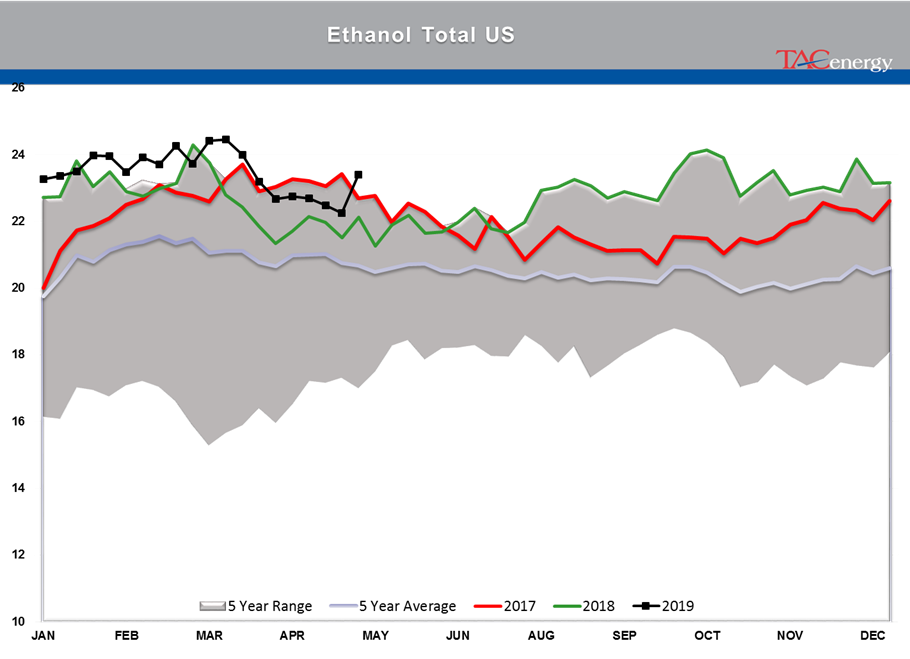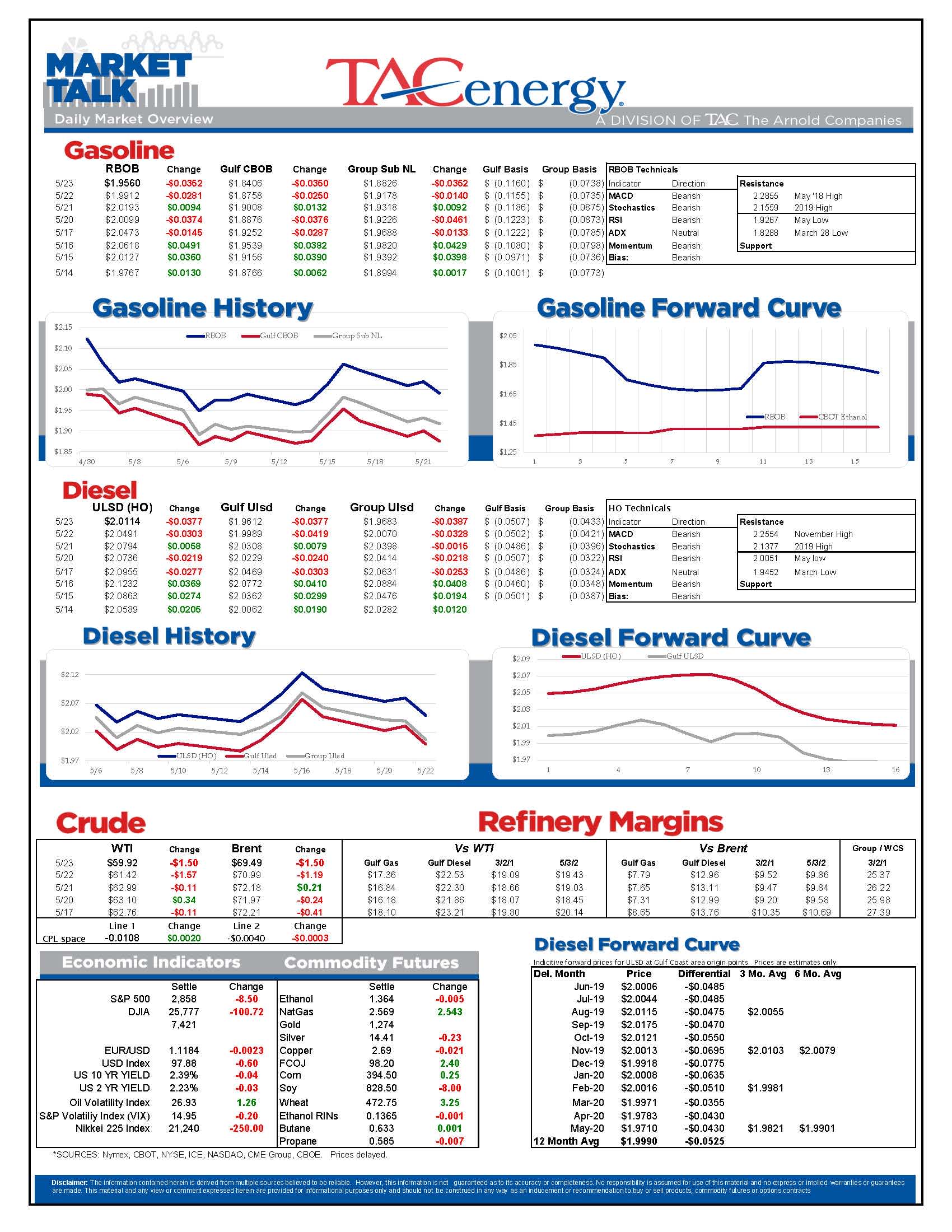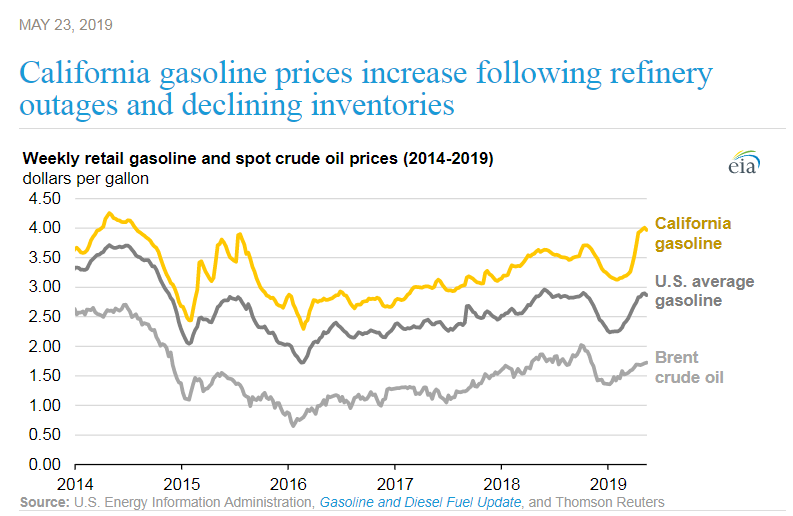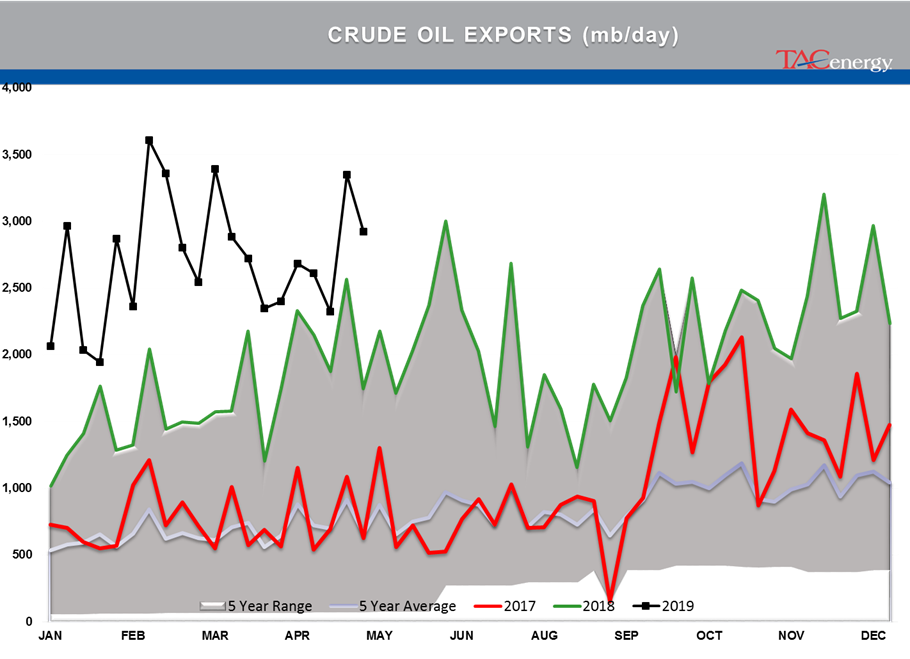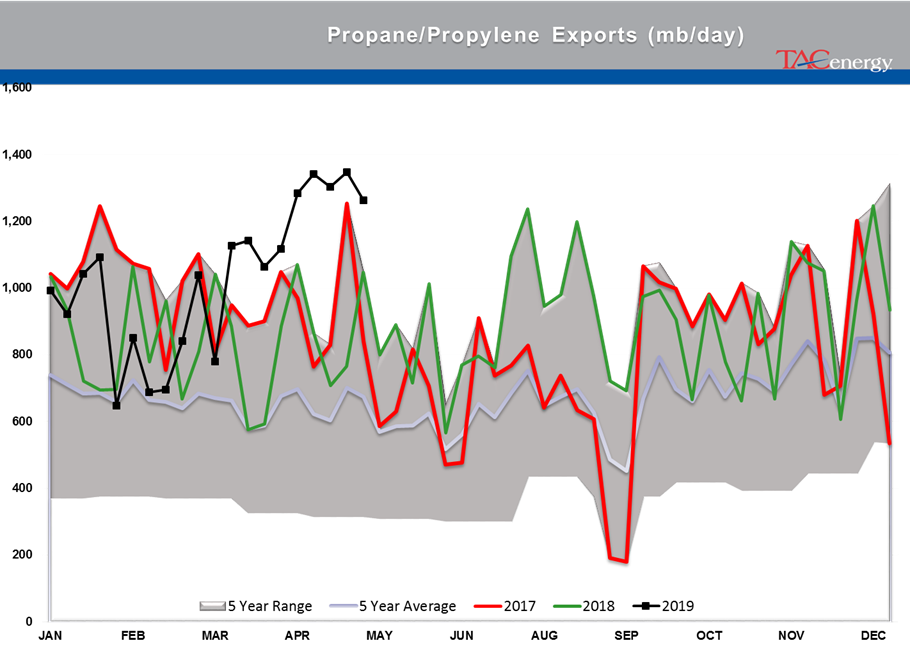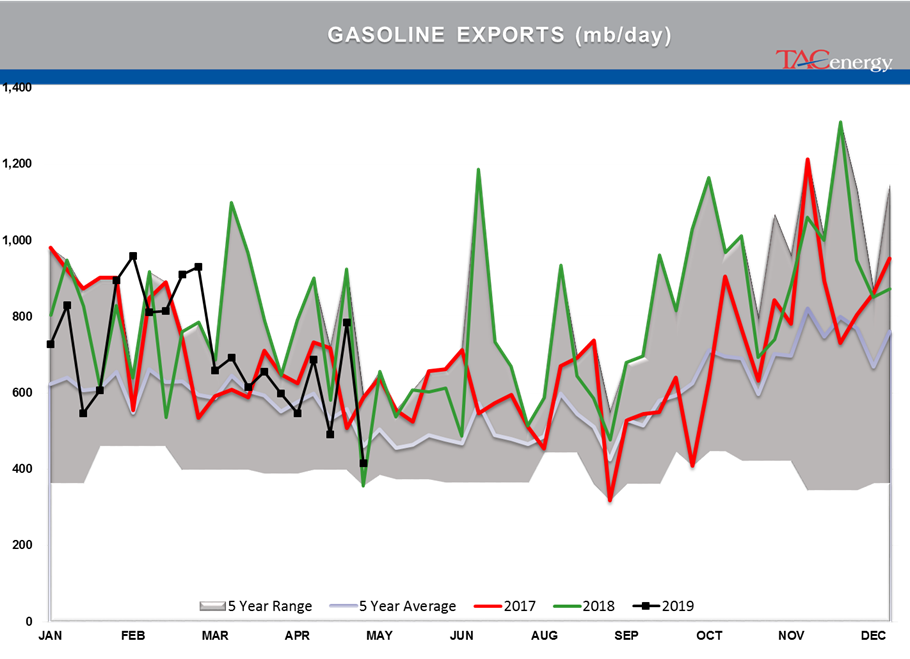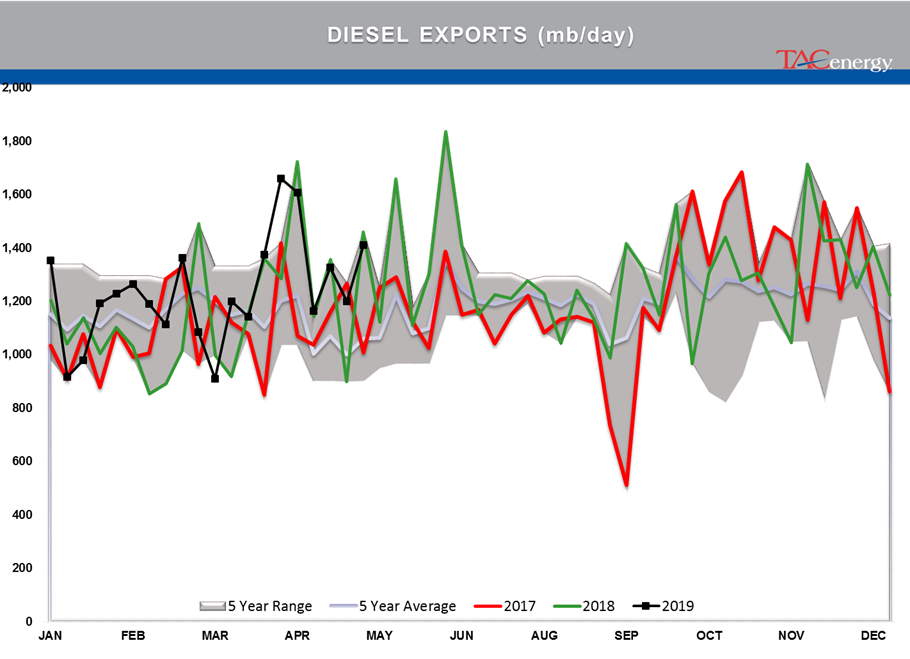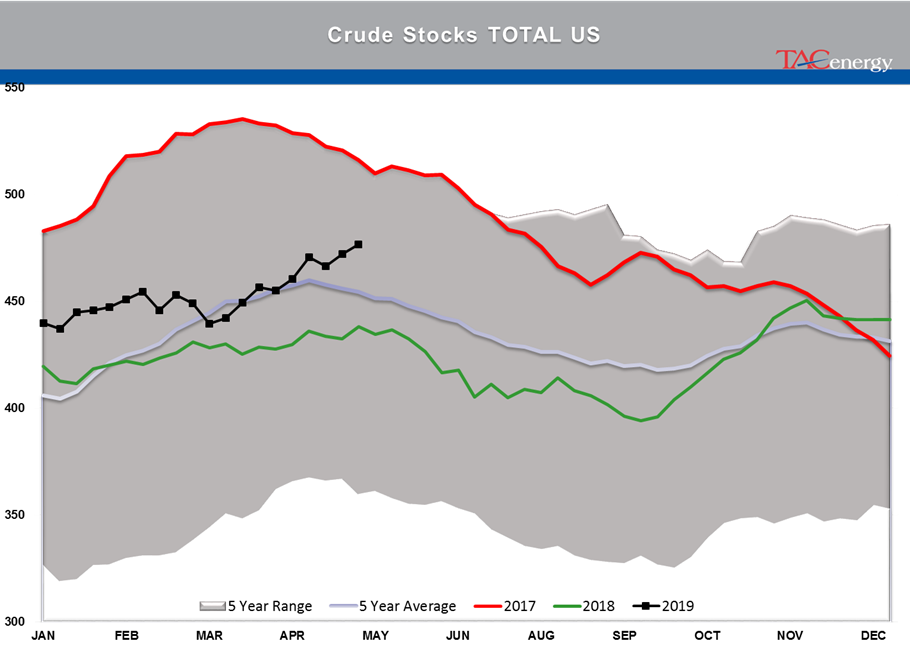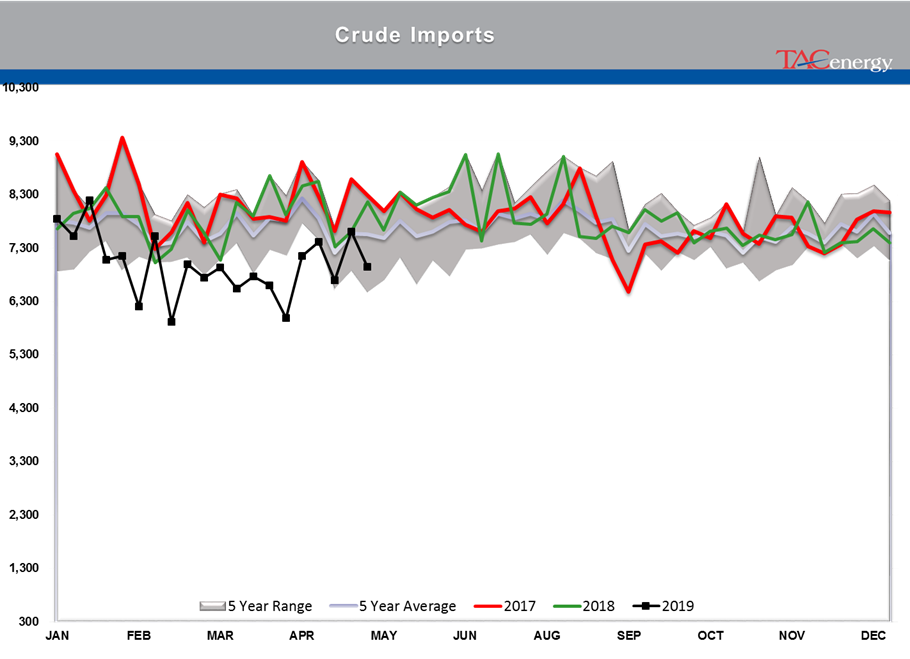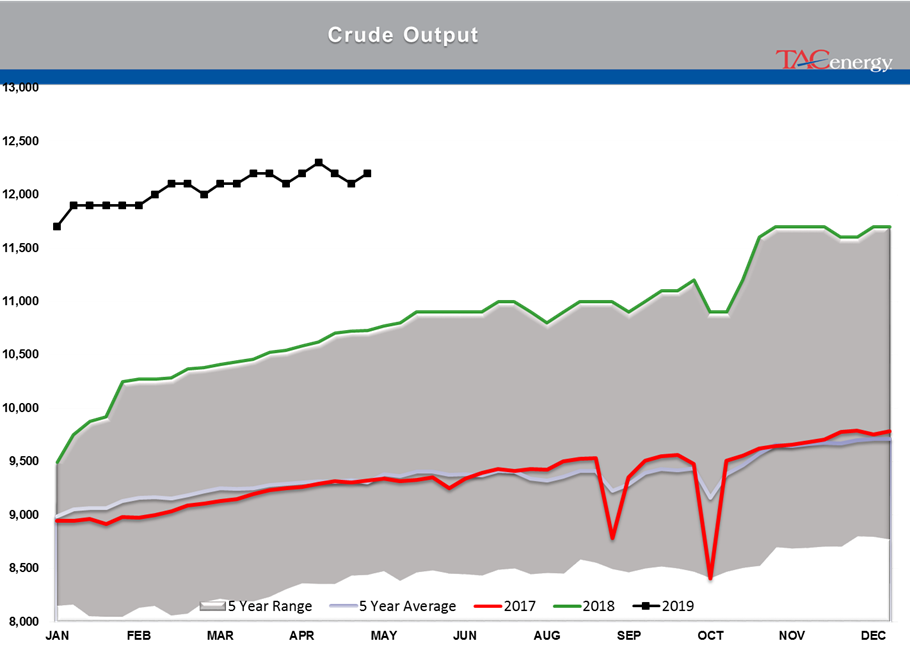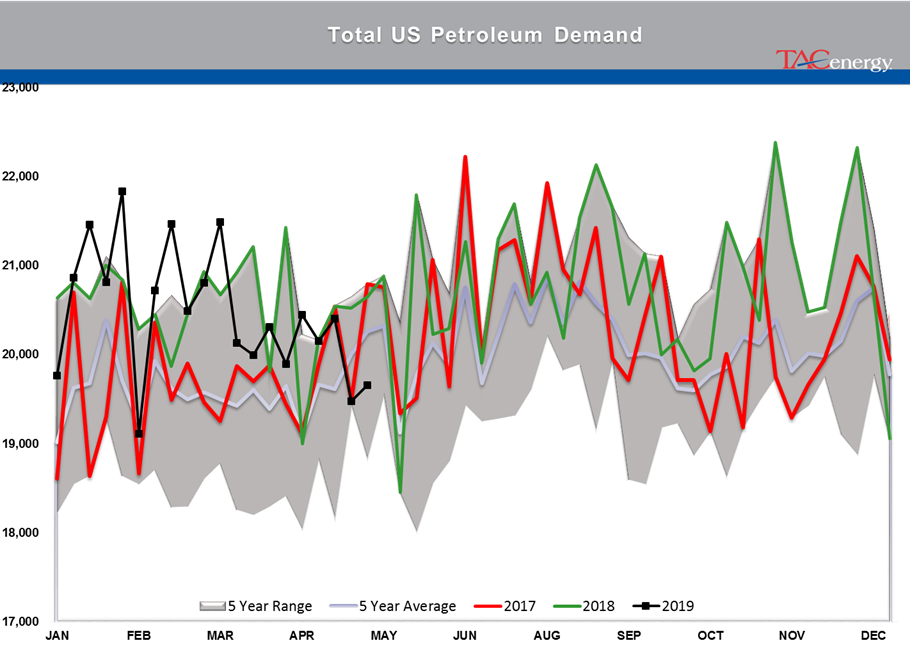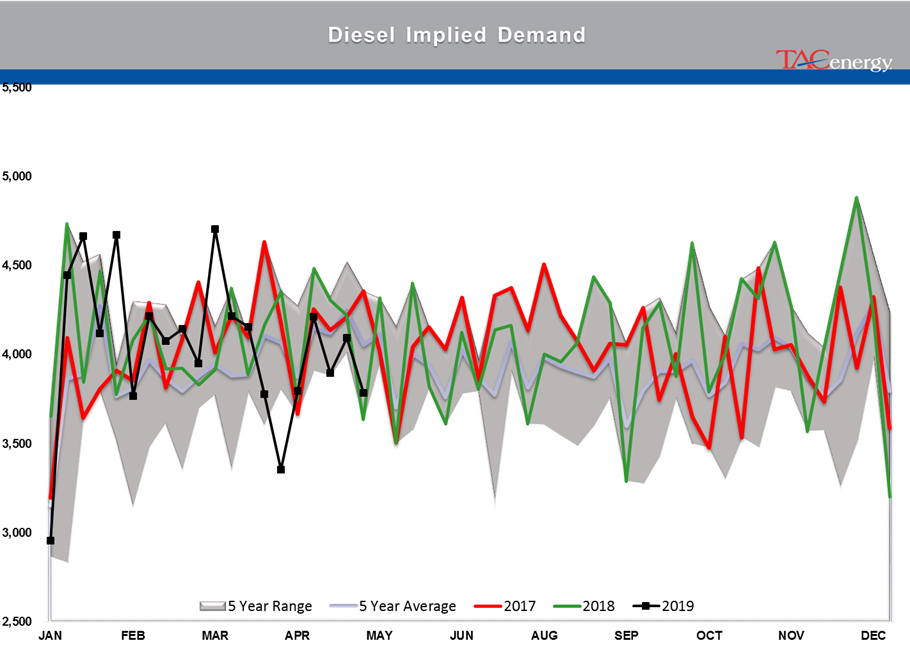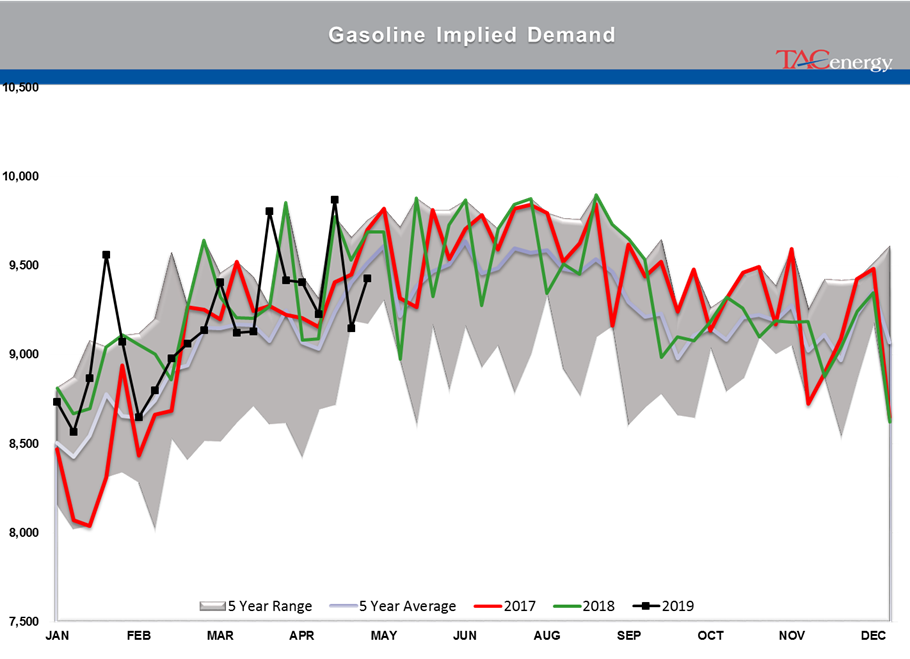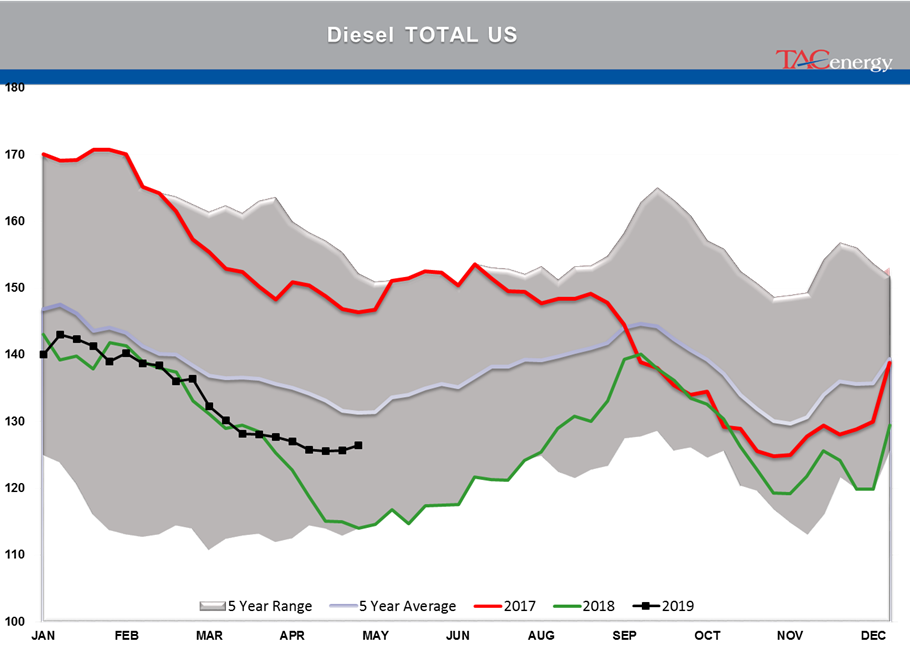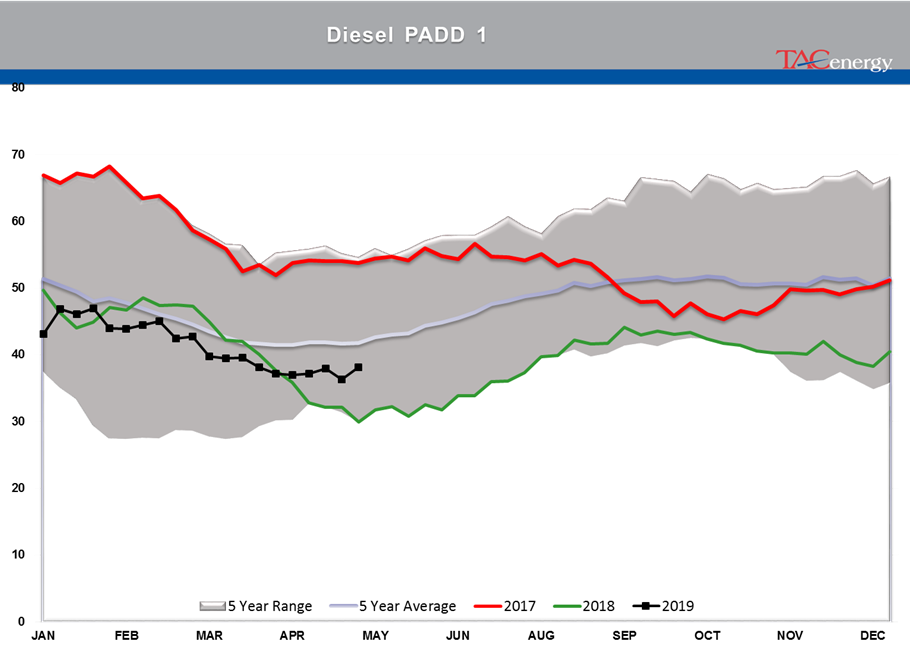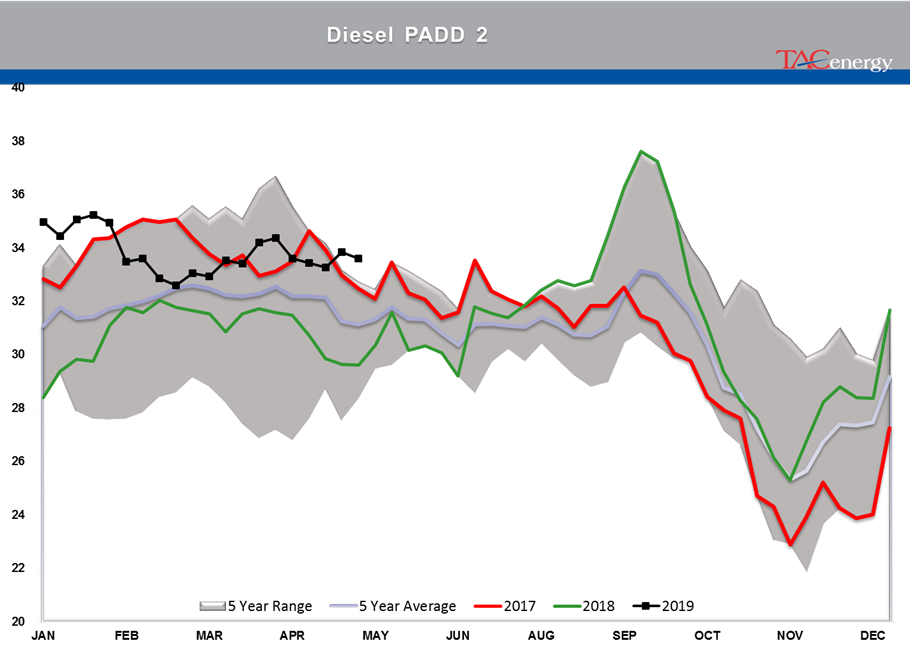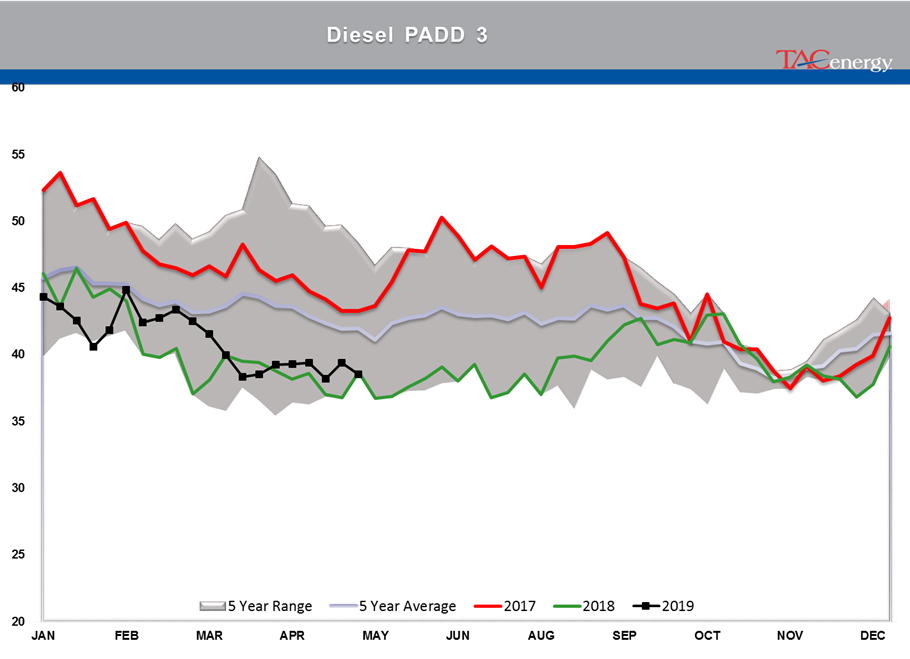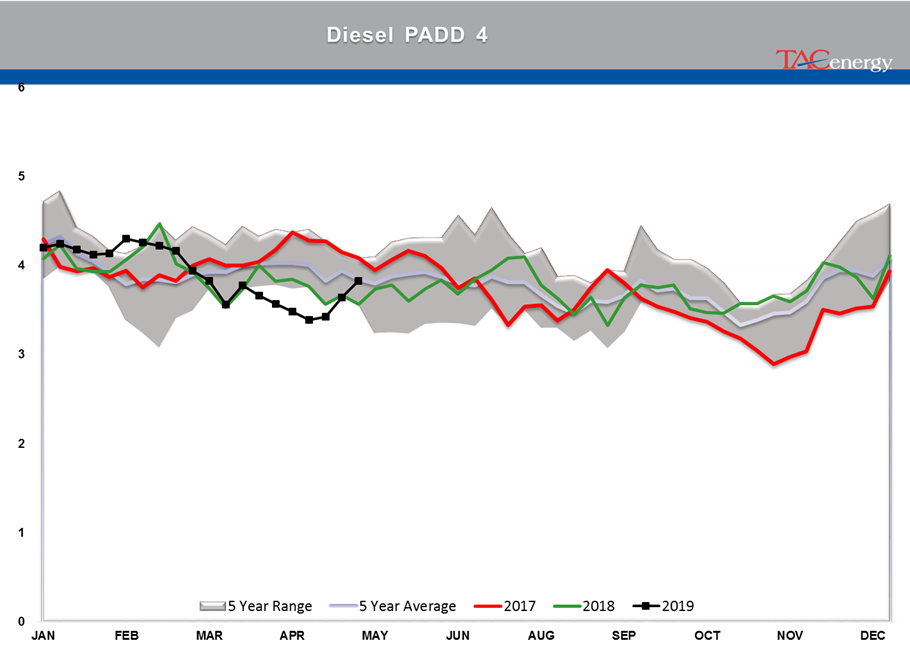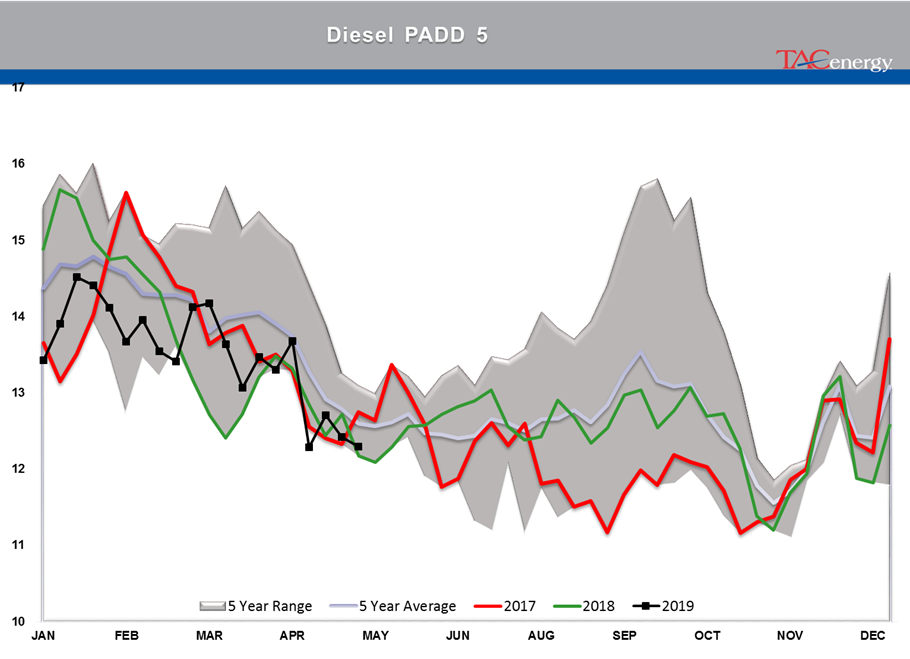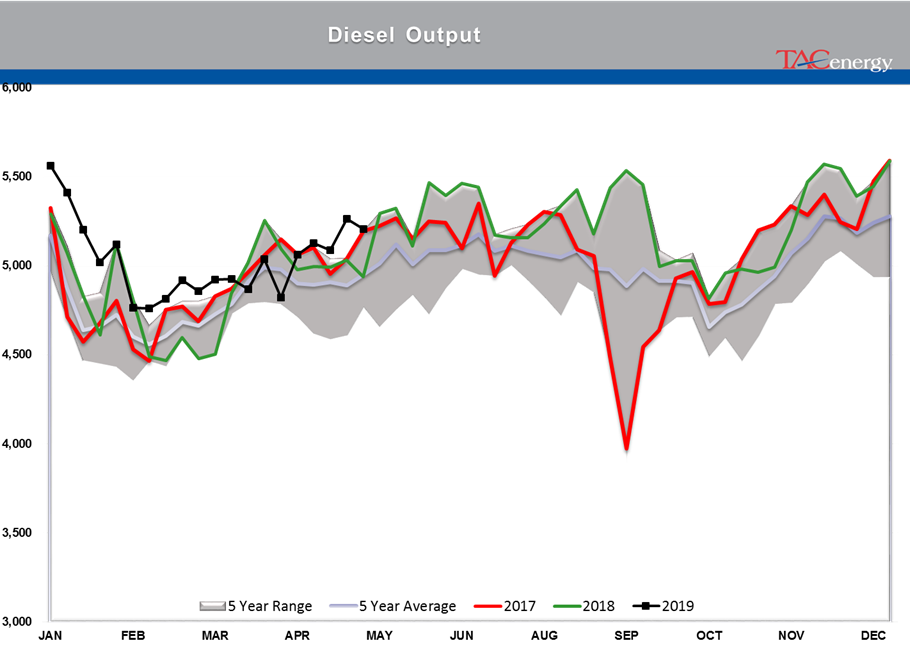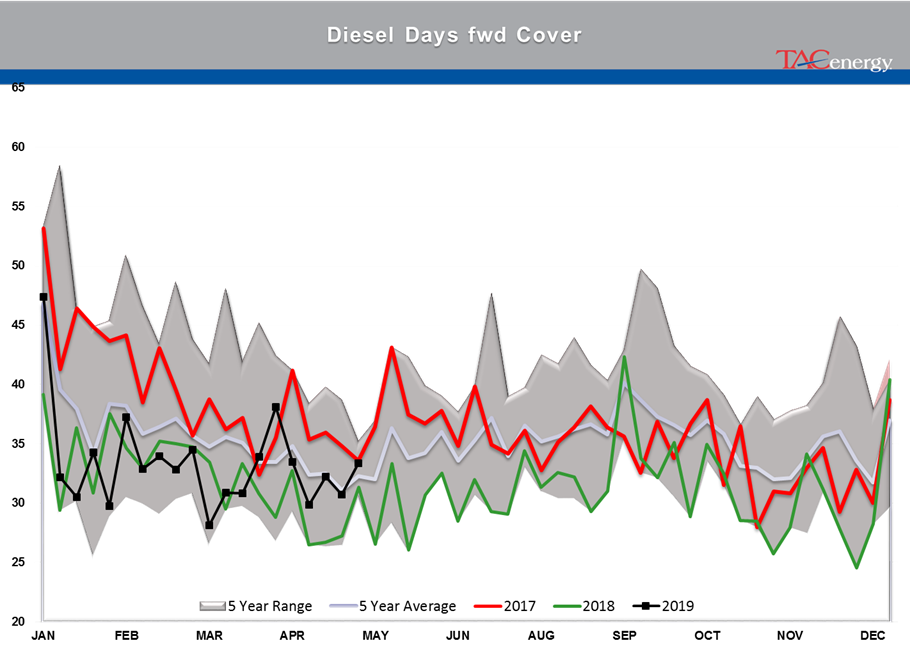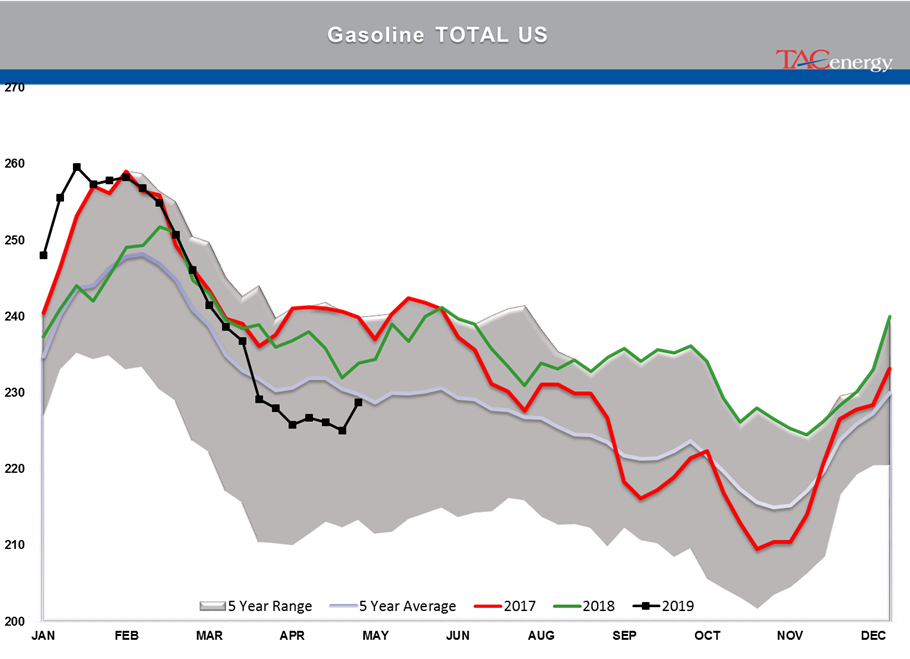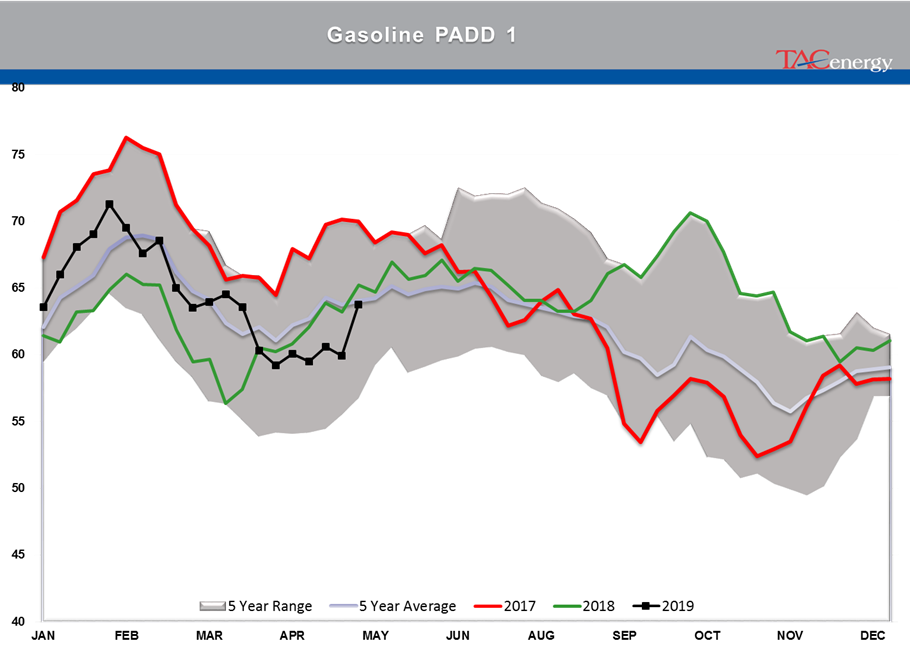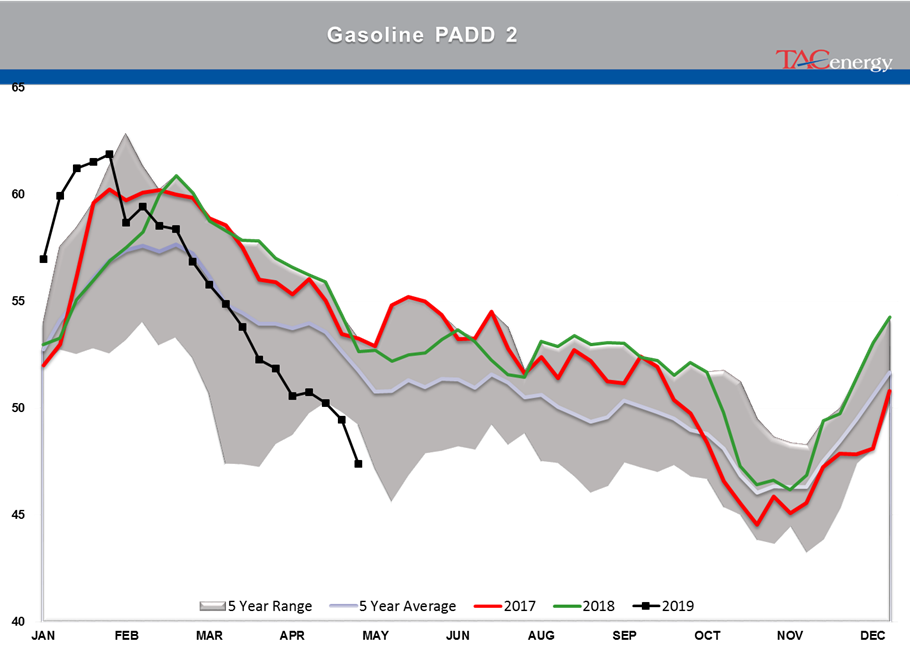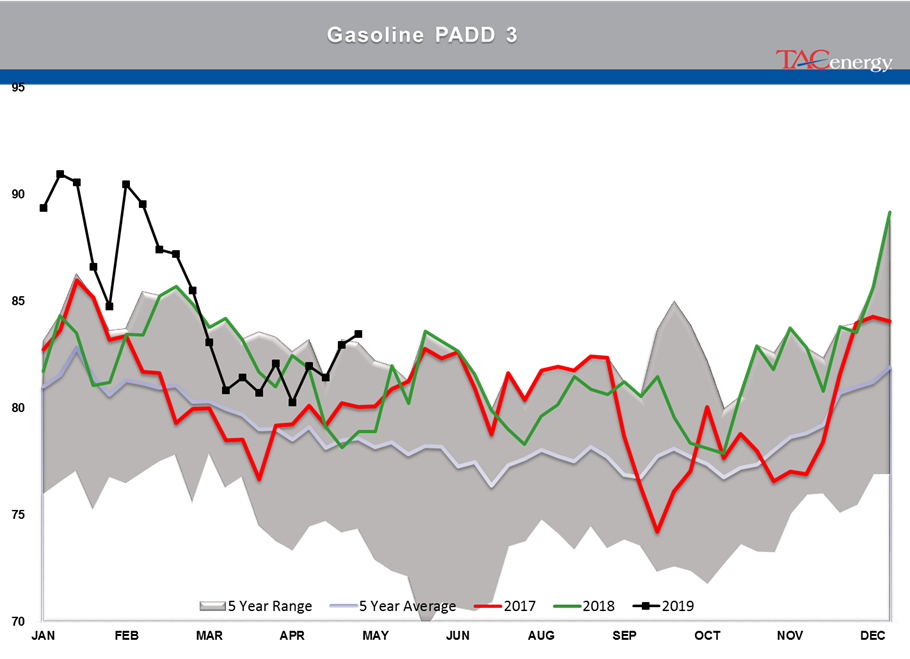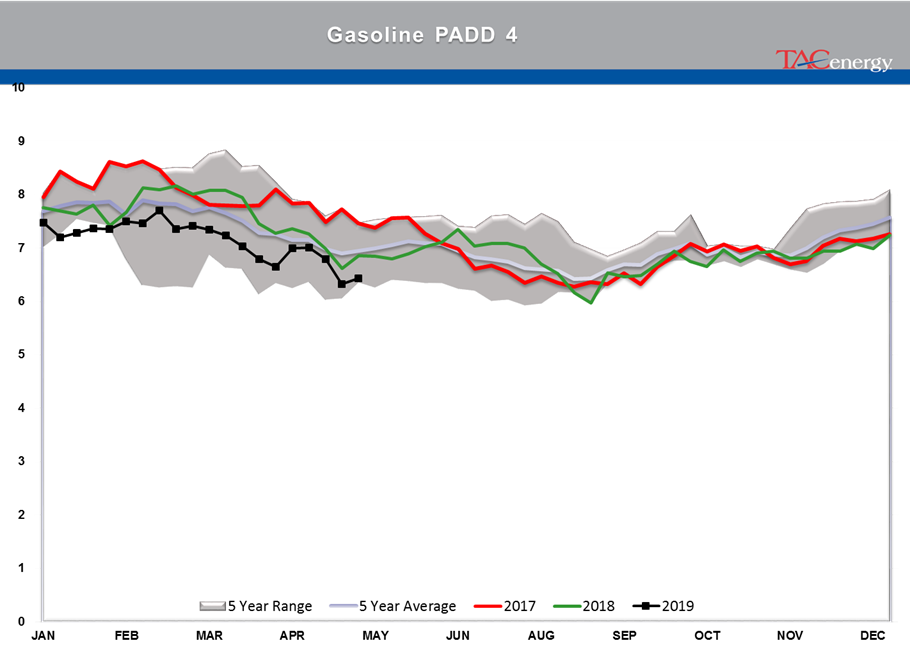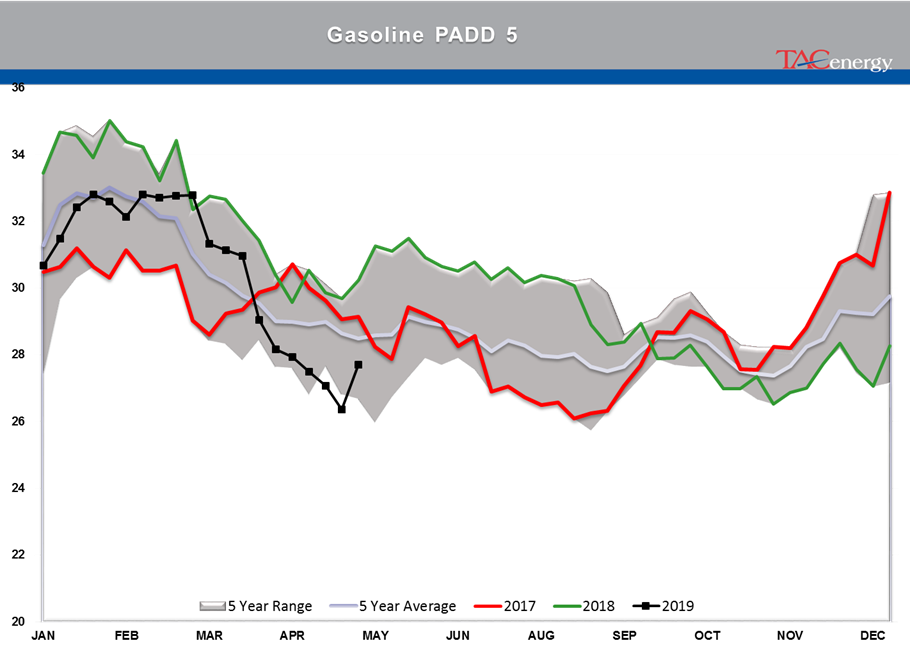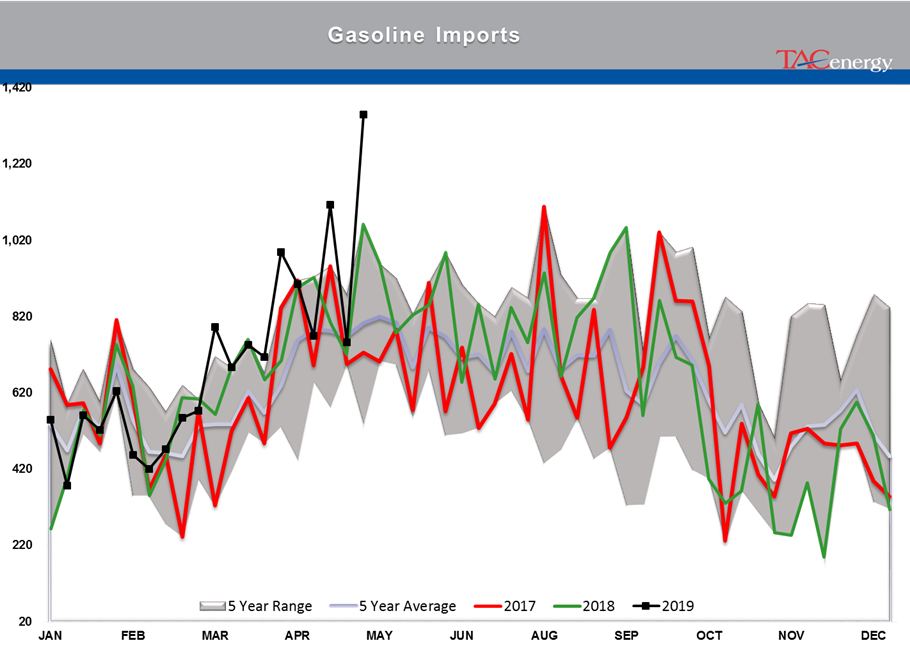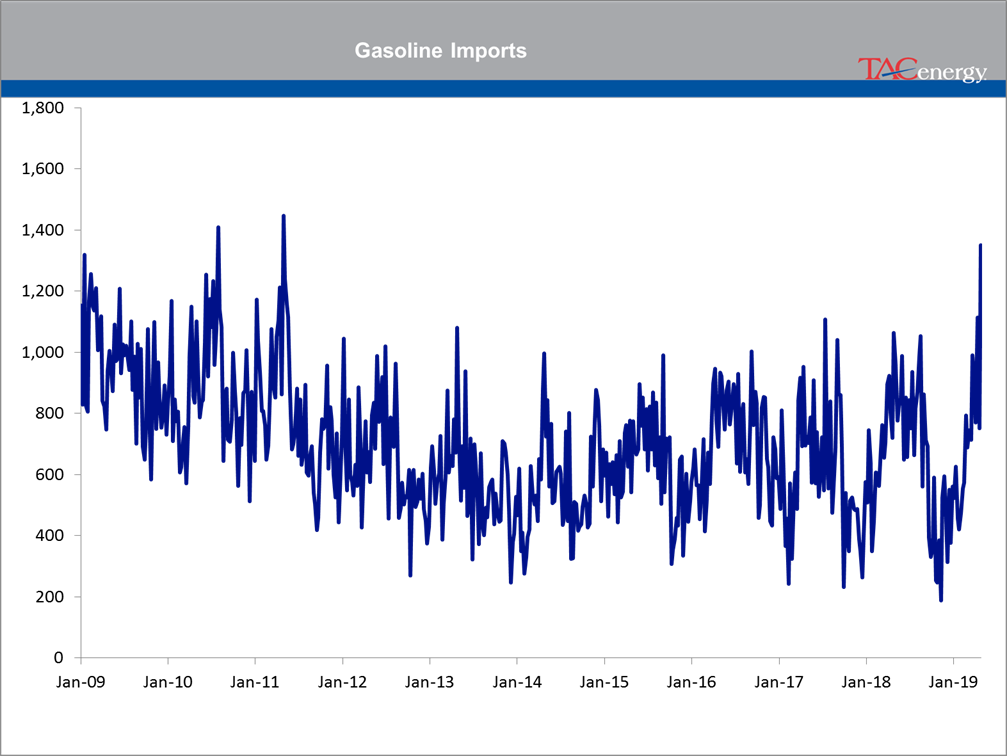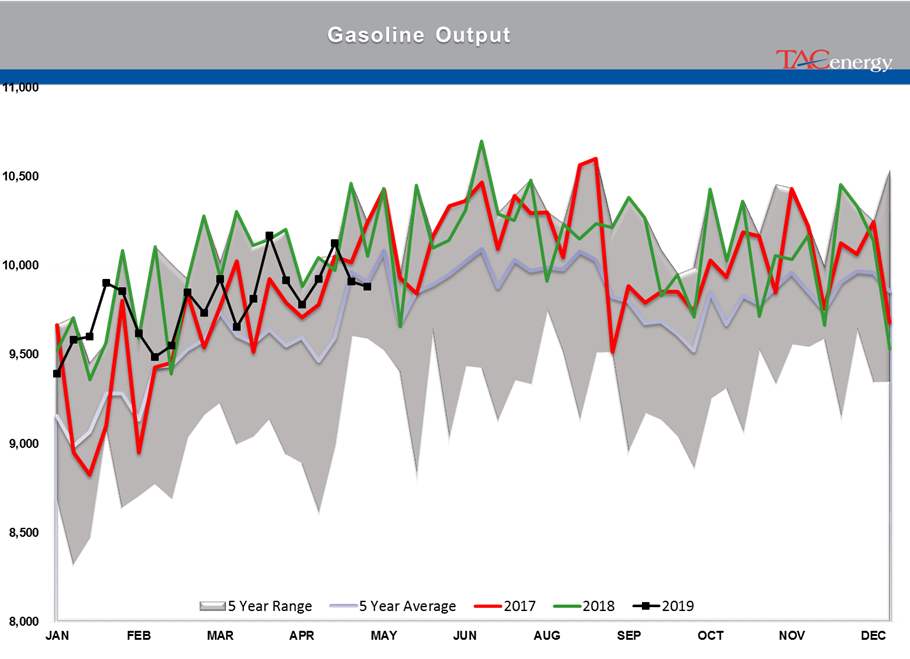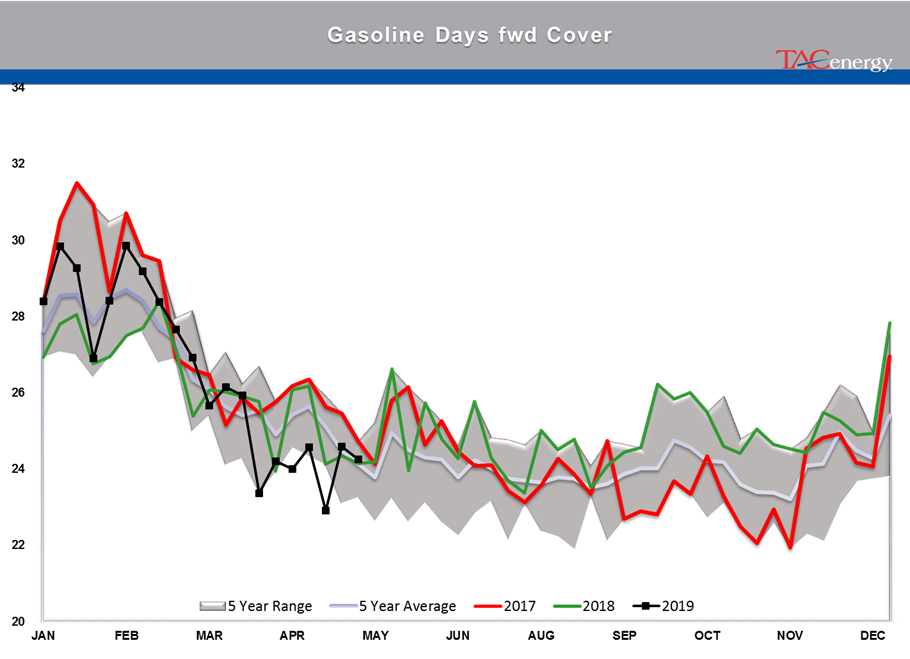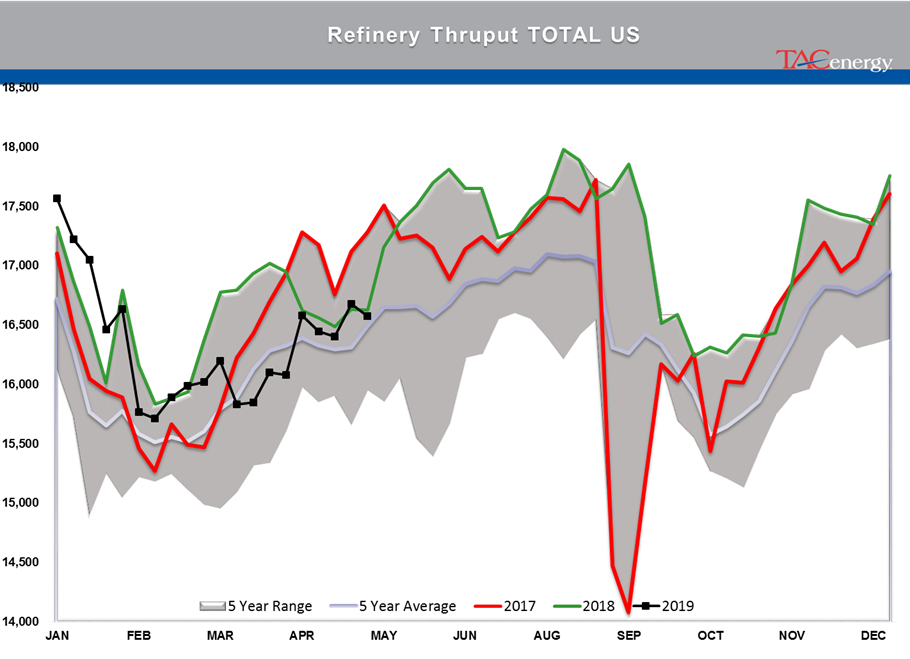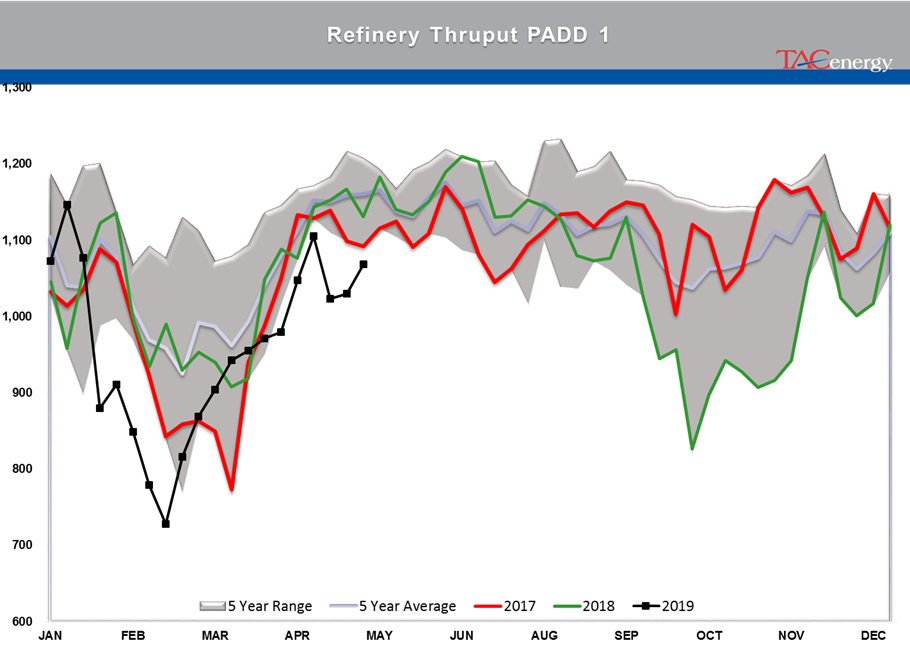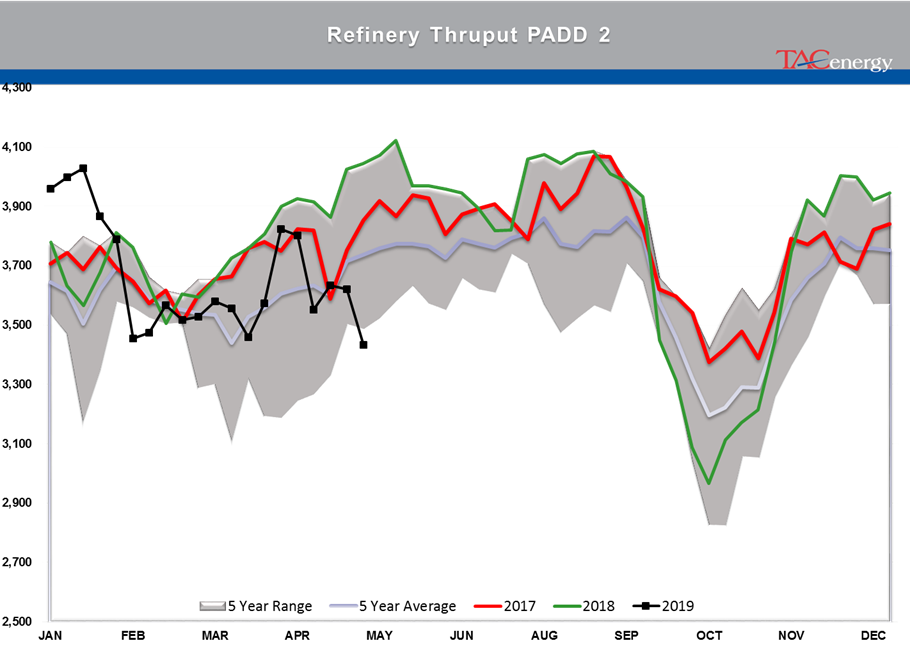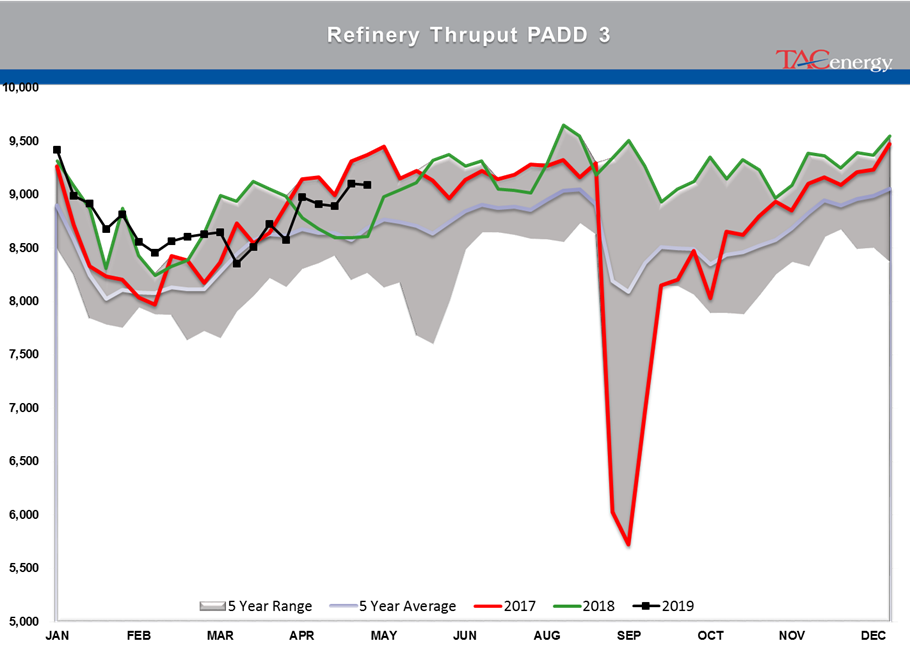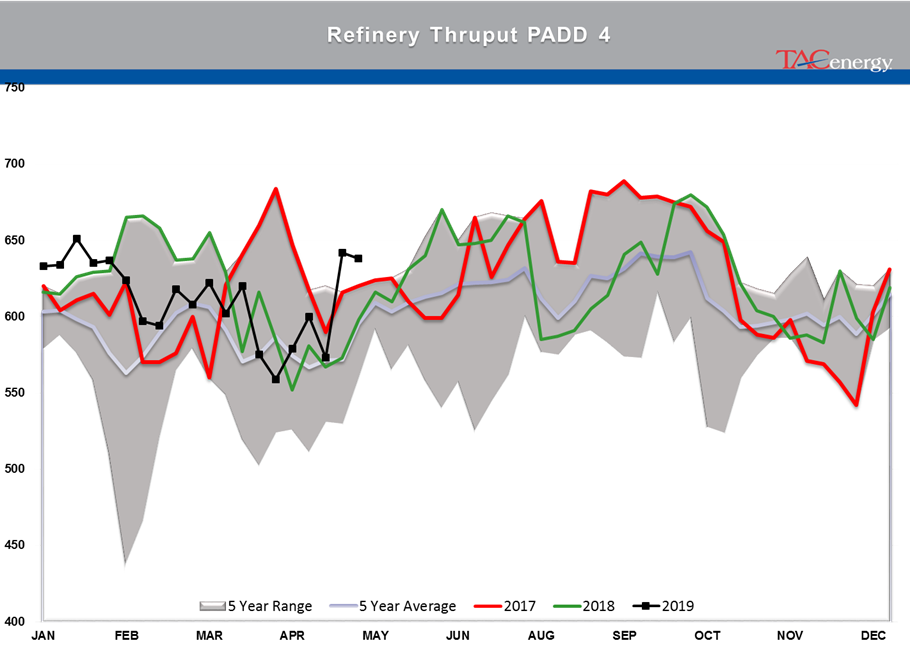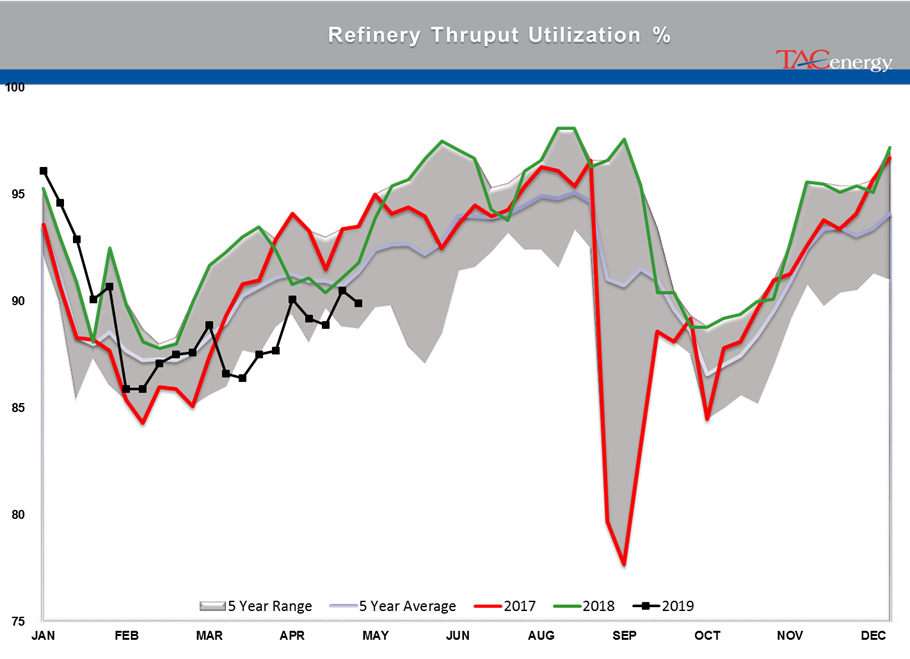Rising Inventory And Falling Stocks

Rising inventory and falling stocks continue to push energy futures lower this week, with WTI trading below $60 for the first time since March overnight, and on pace for its biggest weekly sell-off of the year. A flurry of concerns over European elections and the US/China trade war seem to be sparking a wave of “risk-off” selling that’s hitting numerous asset classes, and some bearish data from the DOE’s weekly report is certainly not helping energy commodities resist the pull lower.
This latest round of selling has tipped short term technical indicators into bearish territory, but unless we see a break and hold below the May lows, it’s too early to say that a trend is forming, and this could just be the latest swing in a choppy market. Both WTI and ULSD broke their May lows overnight, so there is certainly a chance we could get that breakdown yet this week, although it seems less likely since futures often tend to drift higher ahead of a holiday weekend.
US crude oil stocks reached their highest levels since July 2017 last week, even though exports of US crude are holding just under 3 million barrels/day. Refinery throughput rates remain below-average, while output remains just shy of record levels at 12.2 million barrels/day.
Total US petroleum demand is a bit troubling as well for US producers as the past 2 weeks have seen estimates below their seasonal 5 year average, as both gasoline and diesel consumption seems to be lagging in May. If we see a spike in those figures over the coming weeks, the soft reports will be written off to the challenges of estimating demand week by week, but if not, these reports could be the early warning of slowing activity in the US.
The EIA published a new note this morning detailing the issues that caused retail gasoline prices in California to spike north of $4, for the first time in almost 5 years. The good news for consumers on the West Coast is we’ve already seen basis values drop 30-40 cents as refineries come back online and imports are received. With last week’s imports r reaching an 8 year high, it seems like we might see prices continue to decline, unless of course there’s another rash of refinery trouble.
From that report:
The West Coast is isolated by both geography and a lack of petroleum infrastructure connections to the rest of the United States. In addition, California requires a different gasoline specification than the rest of the country, further narrowing resupply options. These restrictions mean that after drawing down in-region inventories, the next available resupply is through imports from refineries in Asia or Europe.
News & Views
View All
Energy Futures Are Caught Up In Headline Tug-O-War This Morning
Energy futures are caught up in headline tug-o-war this morning with Canadian oil production concerns and a positive US GDP report trying to push prices higher while sinking Chinese demand worries and Gaza ceasefire hopes are applying downward pressure. The latter two seem to be favored more so far this morning with WTI and Brent crude oil futures down ~45 cents per barrel, while gasoline and diesel prices are down about half a cent and two cents, respectively.
No news is good news? Chicago gasoline prices dropped nearly 30 cents yesterday, despite there not being any update on Exxon’s Joliet refinery after further damage was discovered Wednesday. Its tough to say if traders have realized the supply situation isn’t as bad as originally thought or if this historically volatile market is just being itself (aka ‘Chicago being Chicago’).
The rain isn’t letting up along the Texas Gulf Coast today and is forecasted to carry on through the weekend. While much of the greater Houston area is under flood watch, only two refineries are within the (more serious) flood warning area: Marathon’s Galveston Bay and Valero’s Texas City refineries. However, notification that more work is needed at Phillip’s 66 Borger refinery (up in the panhandle) is the only filing we’ve seen come through the TECQ, so far.
Premiums over the tariff on Colonial’s Line 1 (aka linespace value) returned to zero yesterday, and actually traded in the negatives, after its extended run of positive values atypical of this time of year. Line 1’s counterpart, Line 2, which carries distillates from Houston to Greensboro NC, has traded at a discount so far this year, due to the healthy, if not over-, supply of diesel along the eastern seaboard.
Click here to download a PDF of today's TACenergy Market Talk.

WTI And Brent Crude Oil Futures Are Trading ~$1.50 Per Barrel Lower In Pre-Market Trading
The across-the-board drawdown in national energy stockpiles, as reported by the Department of Energy yesterday, stoked bullish sentiment Wednesday and prompt month gasoline, diesel, and crude oil futures published gains on the day. Those gains are being given back this morning.
The surprise rate cut by the People’s Bank of China is being blamed for the selling we are seeing in energy markets this morning. While the interest rate drop in both short- and medium-term loans won’t likely affect energy prices outright, the concern lies in the overall economic health of the world’s second largest economy and crude oil consumer. Prompt month WTI and Brent crude oil futures are trading ~$1.50 per barrel lower in pre-market trading, gasoline and diesel are following suit, shaving off .0400-.0450 per gallon.
Chicagoland RBOB has maintained its 60-cent premium over New York prices through this morning and shows no sign of coming down any time soon. Quite the opposite in fact: the storm damage, which knocked Exxon Mobil’s Joliet refinery offline on 7/15, seems to be more extensive than initially thought, potentially extending the repair time and pushing back the expected return date.
There are three main refineries that feed the Chicago market, the impact from one of them shutting down abruptly can be seen in the charts derived from aforementioned data published by the DOE. Refinery throughput in PADD 2 dropped 183,000 barrels per day, driving gasoline stockpiles in the area down to a new 5-year seasonal low.
While it seems all is quiet on the Atlantic front (for now), America’s Refineryland is forecasted to receive non-stop rain and thunderstorms for the next four days. While it may not be as dramatic as a hurricane, flooding and power outages can shut down refineries, and cities for that matter, all the same, as we learned from Beryl.

